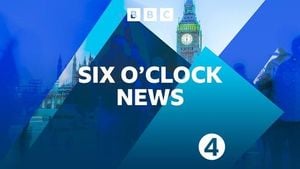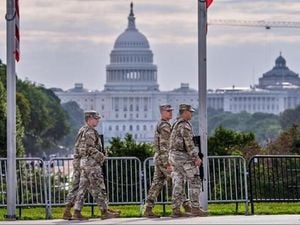Federal Reserve officials find themselves grappling with the continuing challenge of inflation as they weigh potential interest rate cuts. Recent comments from key figures, including Federal Reserve Governor Christopher Waller, underline the complexity of the situation. Waller is leaning toward supporting lower rates at the Fed's December meeting, even with signs of inflation showing some stubbornness. At the American Institute for Economic Research Monetary Conference, he stated, "Recent data have raised the possibility of stalling inflation, potentially remaining above our 2% target, making the upcoming policy discussion pivotal."
The latest data reveals mixed signals. For example, the Fed's preferred inflation metric, the Personal Consumption Expenditures (PCE) price index, rose to 2.3% year-over-year for October, up from 2.1% the previous month. The core PCE measure, which omits food and energy costs, increased to 2.8% from 2.7%. Such figures have caused some unease among policymakers, highlighting the nuanced decision-making environment they face.
Waller, emphasizing the importance of contextual analysis, remarked, "It makes sense for policymakers to cut interest rates at the upcoming FOMC meeting if the data does not indicate significant inflationary pressures." He also stressed the need to monitor the forthcoming economic reports closely, particularly the jobs data, which will be released shortly, and the consumer price index scheduled for December 11.
Waller's analysis suggests confidence about the economy’s direction. He noted the demand level has seen significant moderation over the past year, and compared to last year's peak inflation of 7.2%, current rates indicate more manageable inflation pressures. He added, "The data suggests monetary policy is already restrictive enough to not require drastic changes right now, allowing the possibility of proceeding with rate cuts without significantly altering the overall economic environment."
Contrasting Waller's outlook, analysts like Matthew Luzzetti, the chief U.S. economist at Deutsche Bank, have expressed diverging views about the future of the Fed's rate policies. Luzzetti either expects the Fed to implement a 25-basis-point cut this December, with plans to hold steady through 2025 at lower valuations. He mentioned key factors for this projection, including expectations around economic stability and inflation trends. "The Fed will likely pause and reassess after December, taking stock of the inflation environment before making any bold moves," he stated.
On the other hand, financial experts at Goldman Sachs anticipate more immediate and larger rate cuts. They see the Fed potentially moving more aggressively based on new economic indicators, contrary to the cautious approach suggested by Waller and others. Meanwhile, some analysts fear the Fed may have acted prematurely with previous cuts, opening the door for inflation to stage a comeback.
Indeed, opinion pieces from various financial analysts, including Nigel Green, have warned against taking inflation lightly. Green's stark commentary notes, "Inflation isn’t transitory; it’s persistent and poses real challenges to the Fed’s current strategies. Trends from recent data indicate inflation could resurge, and markets could react adversely to any signs of rate reductions amid rising inflation. A sell-off could be imminent if we see another upward trend of inflation," pointing to uncertainties lurking within financial markets.
The turbulence surrounding inflation and rate cuts has broader ramifications. If inflation starts to pick back up, it won’t just be households and businesses feeling the pinch—it'll also rattle investors who thrive on market stability. It’s worth noting, as Green suggested, the allure of bonds may rise as investors reconsider options, shifting away from equities due to the potential volatility from inflation, possibly leading to increased demand for the stability bonds can offer.
Overall, whether it's Waller's cautious approach leading toward cuts or market fears of inflation's resurgence driving doubts, the Federal Reserve's path remains fraught with challenges. With key reports on the economic horizon, all eyes will remain fixed on how the Fed strategizes its next steps. One thing is clear: the growing complexity of the inflation story will likely dictate the momentum of future economic policies and their impacts on the American household.



